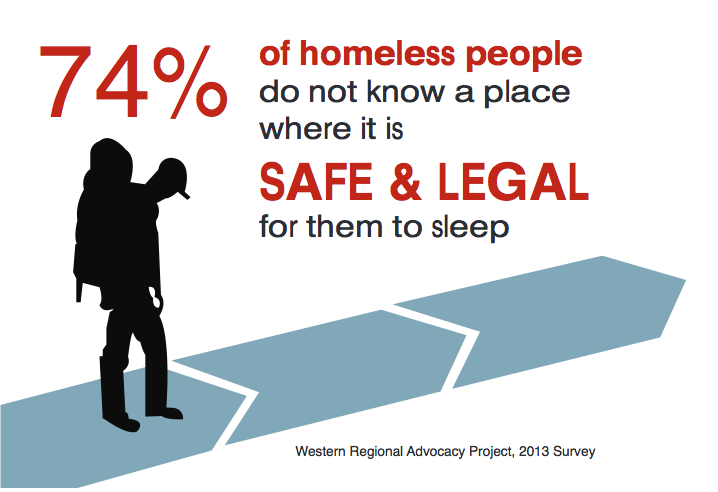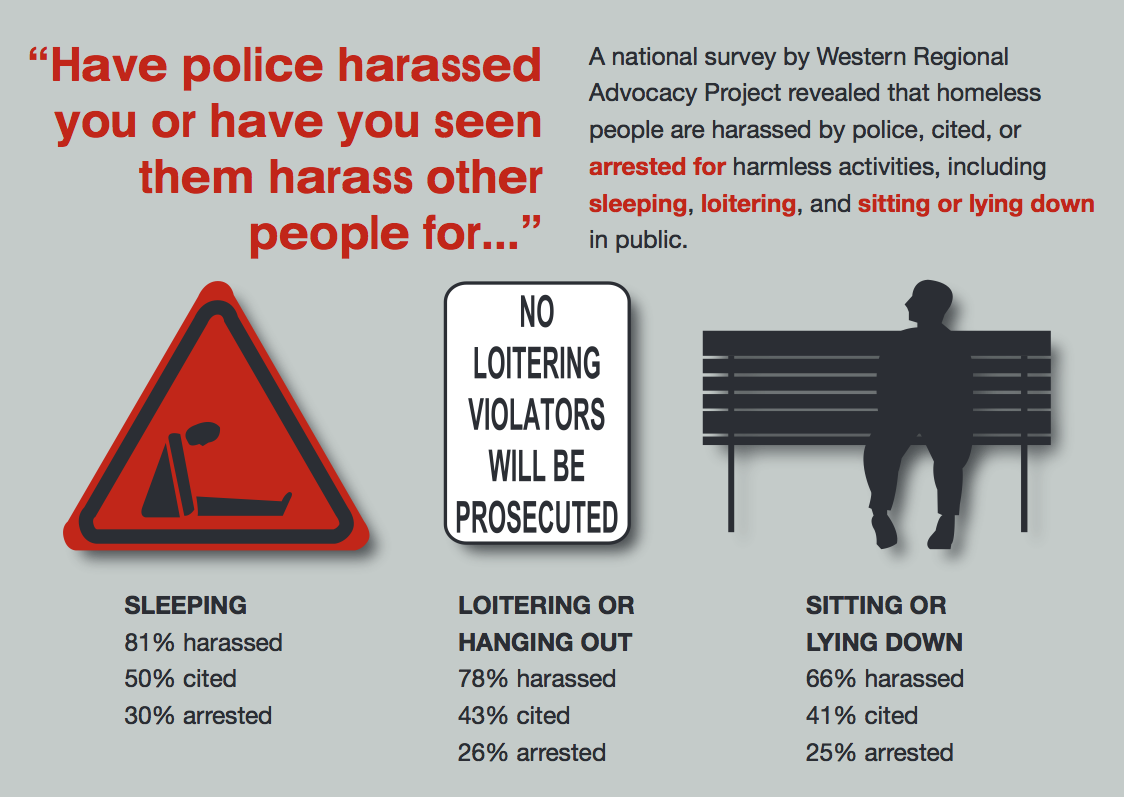People who are homeless are often viewed as being threats to public safety. It's assumed that homeless individuals are inherently harmful and prone to violence. This harsh generalization of all homeless individuals has direct implications on laws, enforcement of law and the criminal justice system's treatment of homeless individuals. In the absence of affordable shelter and housing options, many individuals are forced to live outdoors in areas such as public parks. The below infographic, published by the National Law Center on Homelessness & Poverty (US), states that 74% of homeless people do not know of a place where it's safe for them to sleep. A recent report by the organization, titled No Safe Place, states that of cities surveyed, 18% had bans in place against sleeping in public and more than half of cities surveyed had laws banning sitting or lying down in public.

The relationship between homelessness and crime is far more complicated than homeless individuals causing crime. Homelessness is often the result of crime, and homeless individuals and individuals living in critical housing situations are often victims of crime. An approach to the issue that entirely blames homeless people is one that violates the rights of these individuals and perpetuates myths. The rights of law-abiding homeless people should be no different than the rights of law-abiding members of the general population, criminalizing homelessness changes this paradigm. We also have to consider one of the primary problems with criminalizing homelessness: the contentious relationship between law enforcement and homeless people that arises from the presence of such policies.
Policies that criminalize or frame homeless people as grave threats to the public's wellbeing effectively target homeless individuals, and erode whatever trust homeless people have with law enforcement authorities. As it stands, homeless people are far more likely to be victims of crime compared to the general public; yet it’s these same individuals who are often targeted by police. A 2010 report by the National Coalition for Homelessness states "violent attacks on homeless Americans now outnumber all other categories of hate crime combined". These trends don't disappear when we consider the relationship between violence, policing and homeless people in Canada.
For example, let's consider homeless youth in Toronto and how their experiences tie into this issue. Over three quarters of youth surveyed in a 2010 study stated that they had been a victim of crime in the previous 12 months. Unlike the general population's experience of crime, participants surveyed stated that it was more likely for them to be victims of violent crime than property crime. Living in these circumstances, one would expect a police presence that successfully curbs existing problems rather than further exacerbating already difficult living conditions. Youth stated that interactions with police were usually ones where the youth were implicated as perpetrators of crime. This provides clarity as to why only 20% of youth surveyed stated that they had ever contacted police after crime-related incidents.
So how do we reverse this predicament and go about enacting policies that protect, rather than harm, homeless people? The most obvious step that comes to mind is enacting research-informed policies. Time and time again, studies have shown that housing solutions, rather than jailing homeless individuals or placing them into hospitals, are far more cost-efficient and effective solutions. Just as shelter workers receive training on how to interact with homeless individuals, there should also be informed police protocol on the issue. Criminality is not a synonym for the word homeless, supporting and enacting research-informed practices and policies is surely a step in the right direction.


